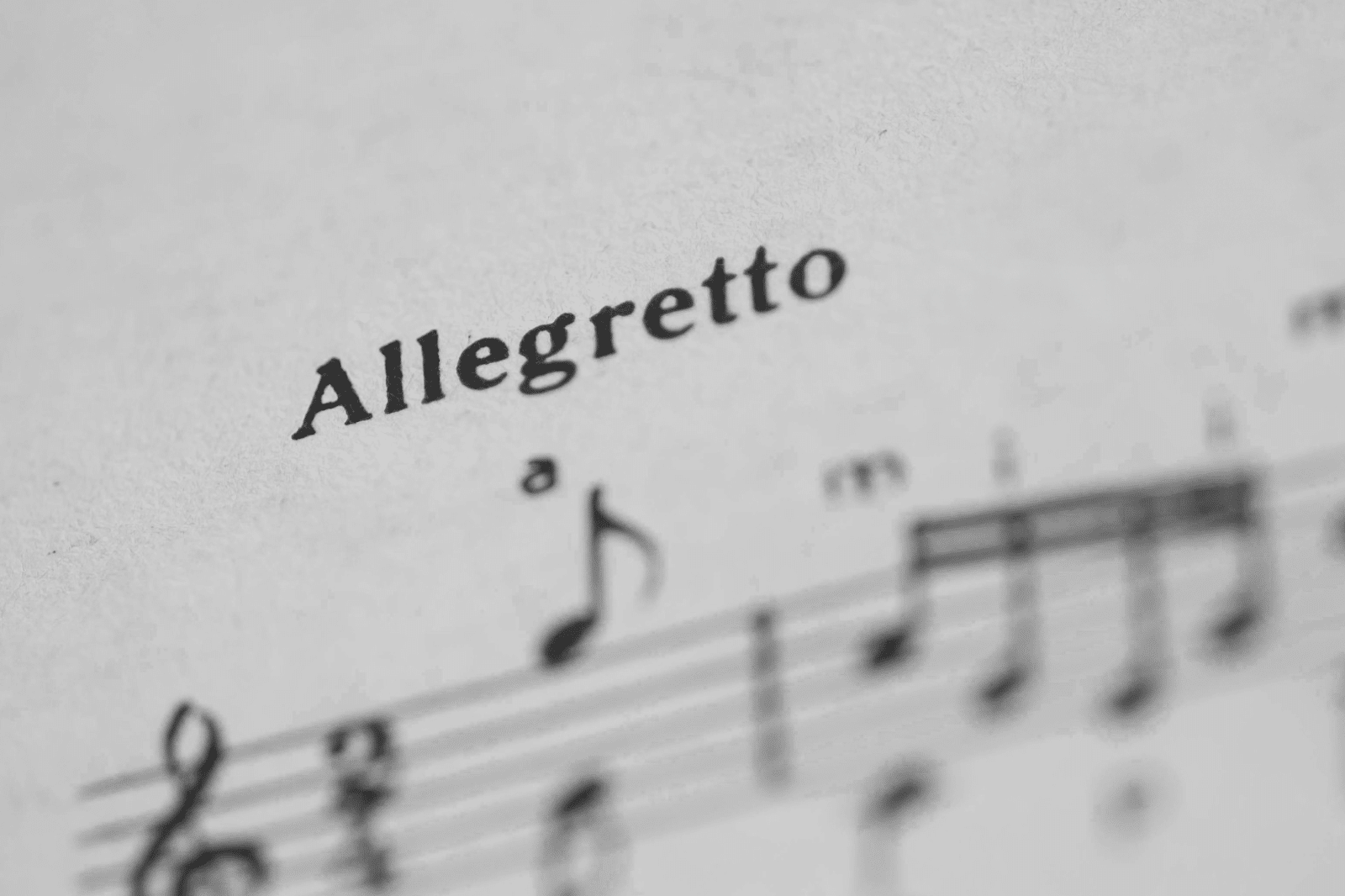If you’re learning a musical instrument, then quite often, one of the first things you learn how to play is a major scale, but there are actually lots of different types of scales. Some sound happy, some sound sad, some have five notes, and some have twelve.
In this post, we’re going to cover all the different types of musical scales, the theory behind them as well as how to form them. Let’s get started.
What is a Scale in Music?

A scale is a group of notes that are arranged by ascending or descending order of pitch.
In an ascending scale, each note is higher in pitch than the last one, and in a descending scale, each note is lower in pitch than the last one.
The Degrees of a Scale
The word scale comes from the Latin word meaning ladder.
So you can think of a scale climbing the rungs of the ladder, which is represented by the stave

You have to have a note on every single line or space.
Each degree of the scale has a special name:
- 1st degree: the tonic
- 2nd degree: the supertonic
- 3rd degree: the
mediant - 4th degree: the subdominant
- 5th degree: the dominant
- 6th degree: the submediant
- 7th degree: the leading note (or leading tone)
The 8th degree of the scale is actually the tonic but an octave higher.
For that reason, when naming the degrees of the scale, you should always call it the 1st degree.
For more information, check out my detailed guide to scale degree names here.
Major Scales
One of the more common types of scale is the major scale.
Major scales are defined by their combination of semitones and tones (whole steps and half steps):
Tone – Tone – Semitone – Tone – Tone – Tone – Semitone
Or in whole steps and half steps, it would be:
Whole – Whole – Half – Whole – Whole – Whole – Half

You can use this formula of whole steps and half steps to form a major scale starting on any note.
For a more in-depth look at forming major scales, check out this post, where we go through all 12 major scales.
Minor Scales
The second type of scale that we’re going to look at is the minor scale.
Minor scales also have seven notes like the major scale, but they’re defined by having a flattened third.
This means that the third note of the scale is three semitones above the first note, unlike major scales, where the third note of the scale is four semitones above.

There are three different types of minor scale:
- The natural minor
- The harmonic minor
- The melodic minor
Each type of minor scale uses a slightly different formula of half and whole steps, but they all have that minor third.
For more info about the types of minor scales, check out my post here.
Major keys are quite often associated with the music feeling happy or joyful, whereas minor keys are known for music that sounds sad or melancholy.
Here’s a video of Chopin’s Prelude in E minor to demonstrate.
Chromatic Scales
The two scales we’ve looked at so far are what we call diatonic scales. This means that they are in ‘a key’, and the first note of the scale is the tonic.
Diatonic scales are also heptatonic (which means they have seven notes) with two intervals of a half step (semitone) and five intervals that are whole steps (tones).
A chromatic scale is very different from a diatonic scale as it is made up of all 12 notes in western music. Each note in a chromatic scale is an interval of a half step (semitone) apart from the others.
In other words, to play a chromatic scale, you choose a note and then play the note a half step above and keep going until you reach the note you started on.
For example, here is an ascending chromatic scale starting on C:

And here is a descending chromatic scale starting on Gb:

Because chromatic scales use every single note, we don’t say that a chromatic scale is in a certain key. We just use the note that the scale starts on to name it.
To read more, check out my guide to chromatic scales here.
Whole Tone Scales
A whole tone scale is a type of scale where each note is an interval of a whole step (tone) apart. It’s the complete opposite of the chromatic scale, where every note is a half step (semitone) apart.
The whole tone scale is a type of hexatonic scale, which means it only has six notes.
This is because there aren’t any half step intervals in a whole tone scale.

Whole tone scales have a very distinctive sound and can be fun to play around with.
To learn more about them, I’ve written a more in-depth post on whole tone scales here.
The Pentatonic Scale
The next type of scale that we’re going to look at is the pentatonic scale. Pentatonic scales are one of the simplest types of scales and have been around for a very long time. It’s thought that they could even be as old as 50,000 years old!
The word pentatonic comes from the Greek word ‘pente,’ meaning five. It’s the same Greek word that we get ‘pentagon,’ meaning five-sided shape.
The five notes in a major pentatonic scale are:
- The first degree – tonic
- The second degree – supertonic
- The
third degree – mediant - The fifth degree – dominant
- The sixth degree – submediant
Here is a c major pentatonic scale so you can see:

The pentatonic scale is very common in lots of music that you’ll be familiar with, everything from blues and jazz to folk and rock music. The simplicity of the pentatonic scale makes it very versatile.
Here’s one of my favorite videos of Bobby McFerrin using the pentatonic scale to make some music with an audience.
The Music Modes
Every major scale has seven modes. They’re sometimes called the church modes or the Greek modes.
The names of them are:
- Ionian (i)
- Dorian (ii)
- Phrygian (iii)
- Lydian (iv)
- Mixolydian (v)
- Aeolian (vi)
- Locrian (vii)

All though they can be quite confusing, you likely are familiar with at least one of them already.
The Ionian mode is just another name for the major scale, and the Aeolian mode is the same as the natural minor scale. Each mode has a different sound; some are major, and some are minor.
For more information on using them, check out this post on music modes here.
Summing up Scales in Music
I hope that helps make a bit more sense of scales.
I’ll be adding some more to this post soon and hope to cover diatonic scales, diminished scales, and scales from other cultures.
If you have any questions about anything covered, just send me a message and I’ll get back to you!



